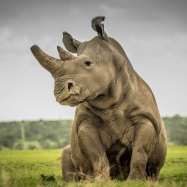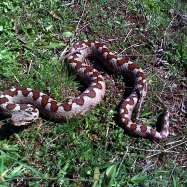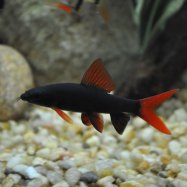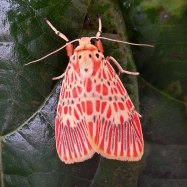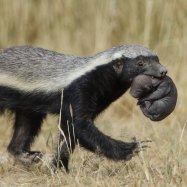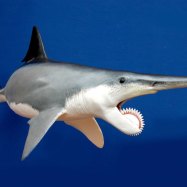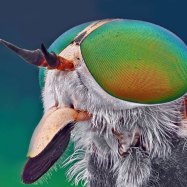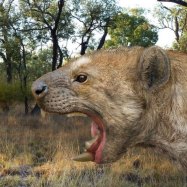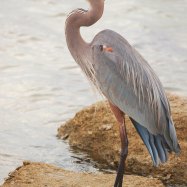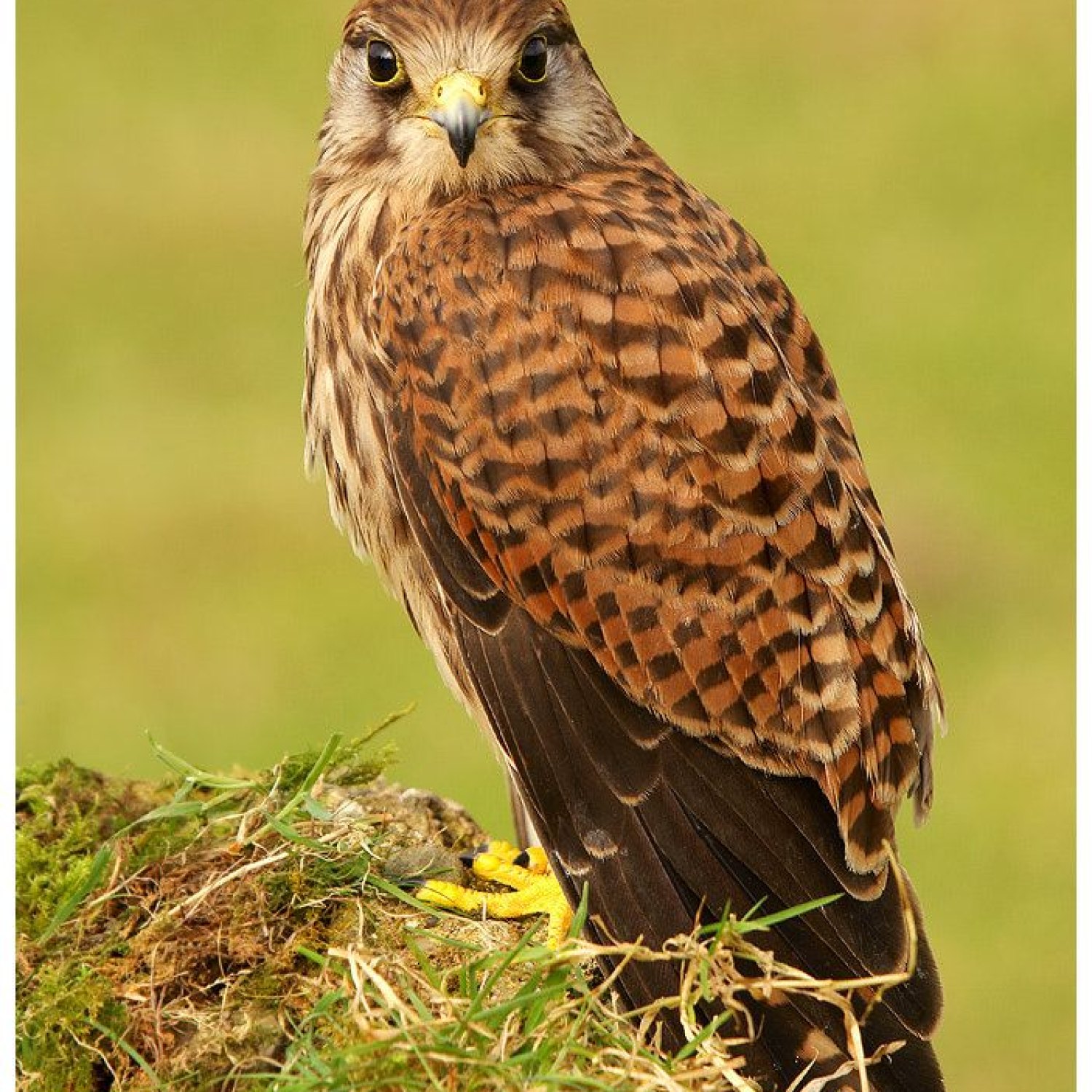
Kestrel
32-37 cm
Kestrels are small but mighty raptors found worldwide. With a compact body shape and a length of 32-37 cm, these birds of prey are skilled hunters, spotting their prey from high in the sky before diving down to catch it. They belong to the Falconidae family and are known for their excellent hunting abilities. Keep an eye out for these fascinating birds in your local area!
Animal Details Summary:
Common Name: Kestrel
Kingdom: Animalia
Habitat: Open fields, grasslands, agricultural areas
The Kestrel: A Majestic Falcon Making its Mark Across the Globe
Out in the open fields and grasslands, a small and compact bird with rust-orange and brown plumage can be seen perched on a tree branch, its keen eyes scanning the surroundings for its next meal. This striking bird is none other than the Kestrel - a majestic falcon that has captured the hearts of bird enthusiasts all over the world.Scientifically known as Falco tinnunculus, the Kestrel belongs to the kingdom Animalia, the phylum Chordata, and the class Aves. It is part of the order Falconiformes and the family Falconidae, making it a cousin to other falcon species such as peregrine falcons and merlins Kestrel. Its common name, Kestrel, is derived from the French word "crécerelle" meaning "little barker," referring to the kestrel's high-pitched calls.
The Kestrel is a widely distributed bird, found in Europe, Asia, and Africa. It is a bird of prey, which means it is carnivorous and feeds on animals such as insects, rodents, small birds, and reptiles. Its geographical distribution across various countries has made it a significant presence in the avian world, earning it a spot among the top birds to look out for in a country's bird checklist.
With its compact body shape, the Kestrel has adapted well to its habitat, which primarily includes open fields, grasslands, and agricultural areas. Let's take a deeper look into the life of this fascinating bird and discover what makes it stand out among other avian species.
The Kestrel's Physical Appearance
The Kestrel is easily recognizable by its distinct rust-orange and brown plumage, with black spots adorning its wings and back. These spots serve as camouflage, blending in with the bird's surroundings and making it an efficient hunter.As with most bird species, the male and female Kestrels have slight differences in appearance Komodo Dragon. The male has a slate-gray head and tail, while the female's is more rusty-brown. Both have a black mustache-like mark under their eyes, giving them a fierce and determined look. The juveniles have a more mottled appearance, with a streaked chest and a yellowish-brown coloration on their faces.
The Kestrel is on the smaller side of the falcon family, measuring about 32-37 cm in length and weighing anywhere from 170-220 grams. Its wingspan can reach up to 76 cm, allowing it to maneuver swiftly and gracefully through the air.
A Dip into the Kestrel's Habitat
The Kestrel's habitat primarily includes open fields, grasslands, and agricultural areas. These habitats provide the perfect conditions for the bird to hunt and scavenge for food. Its preference for open spaces is also evident in its presence in urban areas, where it can be seen perching on buildings and light posts.The Kestrel is known for its ability to hover in the air while searching for prey. This is made possible by its broad, pointed wings, and a long tail that acts as a gyroscopic stabilizer, allowing it to change directions quickly. This aerial hunting technique comes in handy in its preferred habitat, as it can easily spot its prey from above and swoop down to catch it.
Apart from its hunting prowess, the Kestrel is also known for its nesting behavior. It builds its nests in cavities, such as old woodpecker holes, ledges, and crevices in cliffs or buildings. The female is responsible for building the nest using twigs and grass, while the male provides her with food. The Kestrels are monogamous birds, and a pair will often use the same nest for multiple breeding seasons.
A Carnivorous Diet
As mentioned earlier, the Kestrel's feeding method is carnivorous. Its diet consists mainly of insects, small mammals, reptiles, and birds. Its hunting technique involves sitting perched on a high vantage point, scanning the surroundings for potential prey. Once it spots something, it will swoop down swiftly and catch its prey with its sharp talons. This hunting technique is not just restricted to the open fields; Kestrels have been known to hunt in urban areas as well, preying on insects and pigeons.Being a top predator in its habitat, the Kestrel plays an essential role in controlling the population of its prey species. This helps maintain a balance in the ecosystem, preventing overpopulation of certain species and preserving the natural food chain.
Geographical Distribution
The Kestrel's natural habitat spans across Europe, Asia, and Africa, making it a familiar sight in these regions. In Europe, it is found in most countries, with the exception of Iceland, Ireland, and northern regions of Scandinavia. In Asia, it is found in countries such as China, India, Japan, and Pakistan. In Africa, it can be seen in countries such as Algeria, Egypt, Kenya, and South Africa.One interesting fact about the Kestrel is that it is a migratory bird. During the colder months, it migrates to warmer regions, where it can find ample food and shelter. This allows the Kestrel to continue its hunt and survive during the harsh winter months.
The Kestrel's Popularity and Cultural Significance
Given its striking appearance and wide distribution, it's no surprise that the Kestrel has captured the hearts of bird enthusiasts and nature lovers from all over the world. Its strong presence in the avian world has even earned it the title of the national bird in multiple countries, including Belgium, Denmark, and Malta.Apart from its popularity in the birdwatching community, the Kestrel has also found its place in various cultural and historical references. In ancient Roman mythology, the god Saturn transformed into a Kestrel to keep an eye on his wife. In some Native American cultures, the Kestrel symbolizes foresight, agility, and adaptability.
Today, the Kestrel continues to fascinate and inspire people everywhere, making it a beloved and iconic bird in the world of avian species.
The Kestrel and Environmental Conservation
The Kestrel's presence and significance in various ecosystems make it an essential species for environmental conservation. Moreover, its status as a top predator puts it at risk of habitat loss, human interference, and climate change.Organizations and conservationists have recognized the importance of protecting the Kestrel and its natural habitat. Efforts are being made to educate the public on the bird's significance in the ecosystem and the need to preserve open spaces for its survival. Additionally, conservation measures such as the provision of nesting boxes and controlling the use of pesticides in agricultural areas have been put in place to support the Kestrel's population.
The Kestrel in Artificial Intelligence
Apart from its presence in the natural world, the Kestrel has also made its mark in the world of artificial intelligence. In recent years, researchers have looked to the Kestrel for inspiration and insights into the development of artificial intelligence systems.One notable study looked at the Kestrel's hunting behavior and how its visual system processes information while in flight. The researchers were able to replicate this process in a computer model, which could be used in the development of advanced drone technology.
The Kestrel's swift aerial movements and hunting techniques have also inspired the development of a robot called "Nano-Falcon," which mimics the bird's physical and mechanical qualities. This has led to advancements in the field of robotics and has potential applications in search and rescue missions or surveillance operations.
In Conclusion
From its striking appearance to its hunting techniques, geographical distribution, and cultural symbolism, it's no surprise that the Kestrel has made its mark across the globe. This majestic falcon has not only captured the hearts of bird enthusiasts but has also served as an inspiration for various advancements in technology.The Kestrel's presence in ecosystems is vital for maintaining a balance in the natural world, making it an important species to protect and conserve. As we continue to learn more about this magnificent bird, let us also strive to preserve its natural habitat, ensuring that it can continue to soar and thrive for generations to come.

Kestrel
Animal Details Kestrel - Scientific Name: Falco tinnunculus
- Category: Animals K
- Scientific Name: Falco tinnunculus
- Common Name: Kestrel
- Kingdom: Animalia
- Phylum: Chordata
- Class: Aves
- Order: Falconiformes
- Family: Falconidae
- Habitat: Open fields, grasslands, agricultural areas
- Feeding Method: Carnivorous
- Geographical Distribution: Europe, Asia, and Africa
- Country of Origin: Various countries
- Location: Worldwide
- Animal Coloration: Rust-orange and brown plumage with black spots
- Body Shape: Small and compact
- Length: 32-37 cm
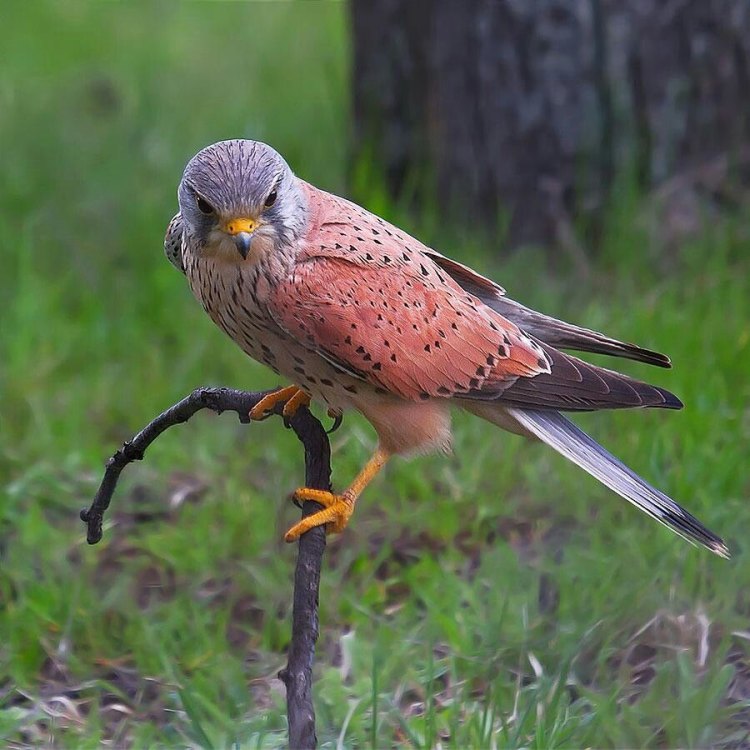
Kestrel
- Adult Size: Small
- Average Lifespan: 3-4 years
- Reproduction: Oviparous
- Reproductive Behavior: Monogamous
- Sound or Call: High-pitched, repetitive call
- Migration Pattern: Migratory and resident populations
- Social Groups: Solitary
- Behavior: Highly agile in flight, hovers while hunting
- Threats: Loss of habitat, pesticide exposure
- Conservation Status: Least Concern
- Impact on Ecosystem: Control of rodent population
- Human Use: Falconry, pest control
- Distinctive Features: Pointed wings, long tail, facial markings
- Interesting Facts: Kestrels have excellent eyesight for hunting
- Predator: Larger birds of prey, mammals
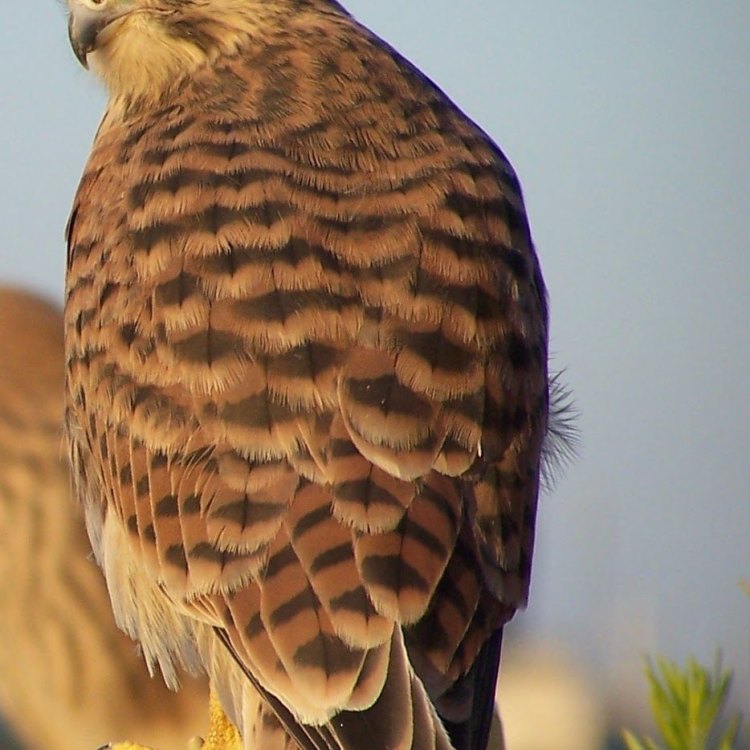
Falco tinnunculus
The Sleek and Mighty Kestrel: A Master of the Skies
Have you ever caught a glimpse of a small, swift bird of prey, with pointed wings and a long tail, flying high above the ground? If so, you may have witnessed a kestrel, one of the most fascinating and adaptive birds in the world. These birds belong to the falcon family and are known for their speed, agility, and unique features. In this article, we will delve into the world of the kestrel, exploring its behavior, threats, and impact on the ecosystem, as well as its distinctive features and interesting facts.The Basics of a Kestrel
The kestrel, also known as the European kestrel or common kestrel, is a small bird of prey found in Europe, Asia, and Africa PeaceOfAnimals.Com. They are the most common falcon species in Europe and are easily identifiable by their size, shape, and coloring. They are smaller than most birds of prey, with an average adult size of 13 to 16 inches and a wingspan of 24 to 29 inches. Despite their small size, they are fierce and skilled hunters, able to take down prey larger than themselves.Kestrels have an average lifespan of 3 to 4 years in the wild, but they can live up to 12 years in captivity. They are oviparous, meaning they lay eggs, and they typically breed once a year. Their reproductive behavior is monogamous, meaning they mate with only one partner during the breeding season. Both the male and female kestrel participate in building the nest and raising the chicks.
A High-Pitched, Repetitive Call
One of the distinctive features of the kestrel is its high-pitched, repetitive call. Considered a vocal bird, the kestrel's call can be heard from a distance, indicating their presence Kiwi. Male kestrels have a higher-pitched call compared to females, and they use it to attract a mate and defend their territory.A Migratory and Solitary Species
Kestrels have a unique migration pattern. Some populations are migratory, meaning they will fly to different regions in search of food and suitable nesting grounds. However, other populations are resident, meaning they stay in the same area year-round. This adaptability makes them well-suited to various environments, from grasslands and farmlands to urban areas.Unlike other birds of prey, kestrels are solitary animals and prefer to hunt and live alone. They are not territorial and do not form social groups, except during breeding season when they mate and raise their young.
Highly Agile and Adept in Flight
Kestrels are known for their impressive flying abilities. They have pointed wings and a long, slender tail, which allows them to be highly agile in flight. They can make quick turns and swoops while hunting, and they even have the ability to hover in the air, something that most other birds cannot do. This agility and agility make them formidable predators in the sky.The Kestrel's Threats
Like many other animal species, kestrels face various threats in their natural habitats. One of the most significant threats to their survival is the loss of habitat. As human development continues to expand, kestrels lose their nesting and hunting grounds, making it challenging for them to find suitable areas to live and raise their young.Another significant threat to kestrels is pesticide exposure. As these birds are higher on the food chain, they can accumulate pesticides in their bodies over time. Pesticides can cause harm to their reproductive abilities and overall health, making it harder for them to survive in the wild.
Conservation Status and Impact on the Ecosystem
Despite the threats they face, the kestrel is currently listed as "Least Concern" on the IUCN Red List of Threatened Species. This is due to their large range and stable population numbers. However, they do face decline in some regions, such as in Europe, where their population has decreased by 50% in the last 40 years.Kestrels play a vital role in their ecosystems as they control the rodent population. These birds of prey are skilled hunters, and their diet consists primarily of small mammals, such as voles and mice. By keeping the rodent population in check, kestrels prevent these pests from damaging crops and spreading diseases.
The Human Use of Kestrels
Kestrels have played an essential role in human activities for centuries. Due to their small size and impressive agility, they have been highly sought after for falconry, a sport that involves using birds of prey to hunt for game. In the past, kestrels were used for this purpose, and they were trained to hunt small game such as rabbits, making them valuable assets to their human handlers.Additionally, kestrels are also used for pest control. Farmers and landowners often use them to control rodent populations in fields and barns. This natural method of pest control is both effective and environmentally friendly, making kestrels valuable allies to humans.
Distinctive Features and Interesting Facts
Kestrels have several distinctive features that set them apart from other birds of prey. Their pointed wings and long tail aid them in flight, making them swift and agile predators. Another unique feature is their facial markings, including a distinctive dark mustache-like stripe on their cheeks.One of the most interesting facts about kestrels is their exceptional eyesight. They have a keen sense of vision, and their eyes can even see ultraviolet light, which helps them detect the urine trails of rodents, making it easier for them to hunt. Their excellent eyesight also allows them to spot potential threats and predators, helping them survive in the wild.
Predators of the Mighty Kestrel
Despite their impressive hunting skills, kestrels have their fair share of predators. Larger birds of prey, such as hawks and owls, are their main predators, especially during the breeding season when they are more vulnerable. Additionally, mammals such as foxes and weasels may also prey on kestrel chicks.The Importance of Protecting Kestrels
Kestrels are a vital part of our ecosystem, playing a crucial role in controlling rodent populations and maintaining a balanced ecosystem. However, their population is declining, and they are facing multiple threats. It is crucial that we take action to protect these magnificent birds and their habitats.Reducing the use of pesticides and preserving natural habitats are essential steps in protecting kestrels. Additionally, educating the public about these birds and their importance in the ecosystem can also help raise awareness and promote conservation efforts.
In conclusion, the kestrel is a fascinating and adaptive bird of prey. From its distinctive features and interesting facts to its impressive hunting skills, this small but mighty bird has captured the attention of humans for centuries. But beyond being a valuable asset for falconry and pest control, kestrels play a vital role in maintaining a healthy ecosystem. It is our responsibility to protect these birds and ensure their survival for future generations to appreciate and admire.
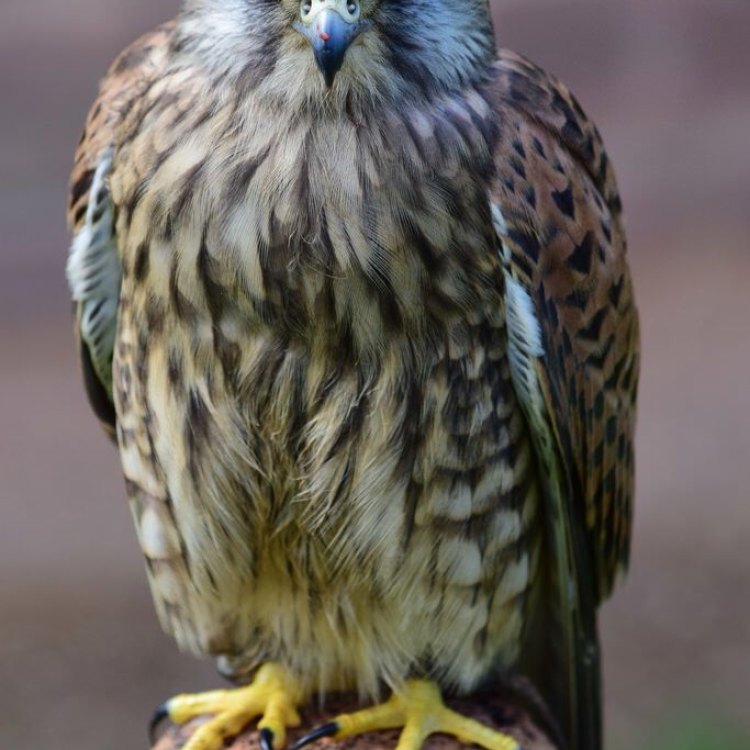
The Kestrel: A Majestic Falcon Making its Mark Across the Globe
Disclaimer: The content provided is for informational purposes only. We cannot guarantee the accuracy of the information on this page 100%. All information provided here may change without prior notice.

